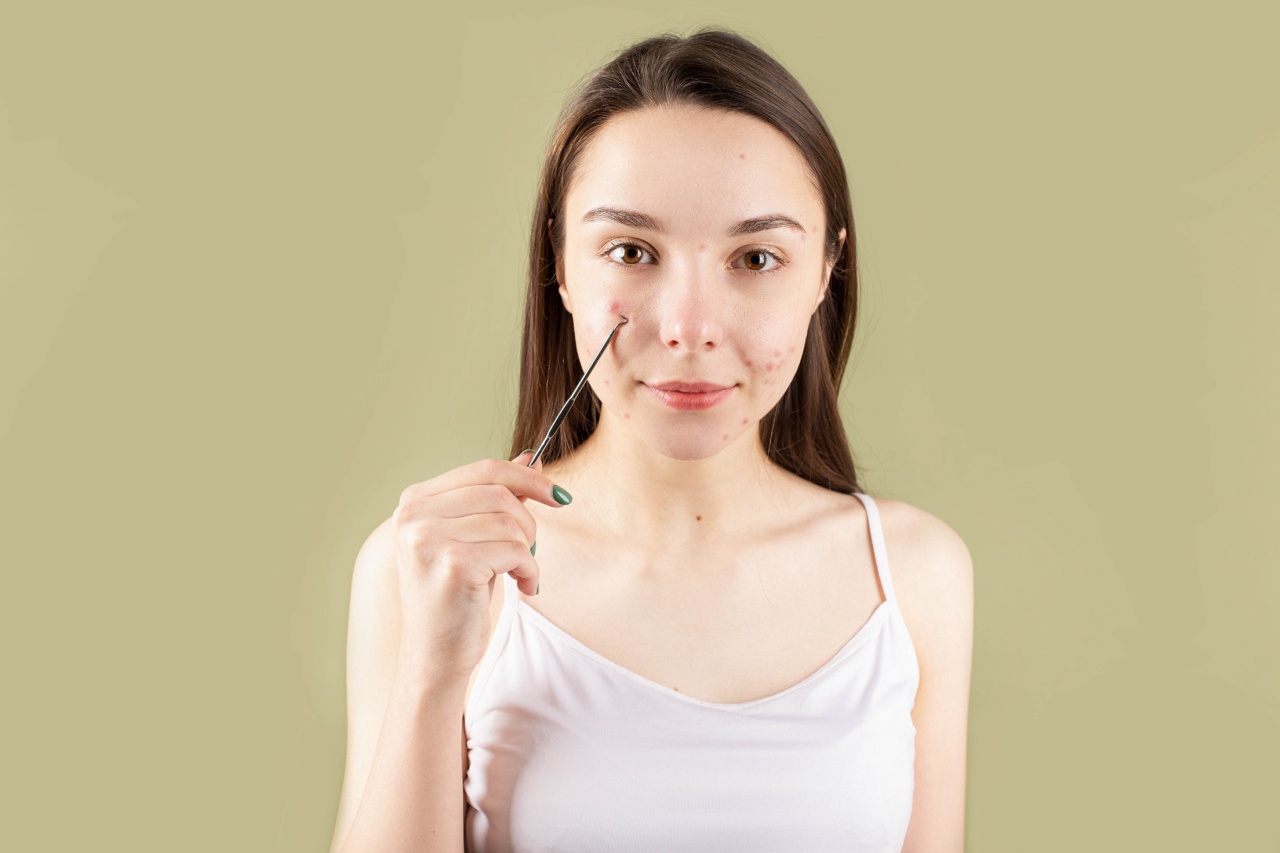Genital pimples, also known as genital acne or folliculitis, are small, red bumps that appear on or around the genital area. These pimples can be caused by a variety of factors, including infections, hormonal changes, and poor hygiene.
One common cause of genital pimples is Staphylococcus, a type of bacteria that can cause skin infections. In this article, we will explore the causes and treatment options for genital pimples and how Staphylococcus can contribute to their development.
Causes of Genital Pimples
There are several factors that can contribute to the development of genital pimples. Some of the common causes include:.
1. Hormonal Changes
Hormonal fluctuations, especially during puberty or menstruation, can cause an increase in sebum production. Excessive sebum production can lead to clogged pores and the formation of pimples.
2. Poor Hygiene
Not maintaining proper hygiene in the genital area can lead to the accumulation of bacteria, sweat, and dirt, which can clog the pores and result in pimples.
3. Friction or Irritation
Friction from tight clothing, shaving, or sexual activity can irritate the skin, leading to the development of pimples.
4. Infections
Genital pimples can also be caused by bacterial or fungal infections. Staphylococcus is one of the main culprits behind these infections.
Staphylococcus and Genital Pimples
Staphylococcus bacteria are commonly found on the skin and mucous membranes.
While they usually do not cause any harm, certain strains of Staphylococcus can cause infections if they enter the body through breaks in the skin, such as hair follicles or small cuts. These infections can manifest as genital pimples or other skin conditions.
Staphylococcus can be transmitted through direct contact with an infected person or by touching contaminated objects.
Sharing personal items, such as towels or razors, with someone who has a Staphylococcus infection increases the risk of developing genital pimples.
When Staphylococcus enters the hair follicles in the genital area, it can cause inflammation and infection, leading to the formation of pimples. These pimples may be red, swollen, and filled with pus.
If left untreated, the infection can spread and cause more severe symptoms.
Symptoms of Genital Pimples
1. Small, red bumps
Genital pimples usually appear as small, red bumps on or around the genital area. They may be filled with pus or have a whitehead-like appearance.
2. Itching or discomfort
Some individuals may experience itching or discomfort in the affected area.
3. Pain or tenderness
In more severe cases, genital pimples can be painful or tender to the touch.
Treatment Options for Genital Pimples
The treatment options for genital pimples depend on the underlying cause. Here are some common approaches:.
1. Practicing good hygiene
Keeping the genital area clean and dry is crucial for preventing and treating genital pimples. Use a mild, unscented soap and warm water to cleanse the area. Avoid using harsh products or excessive scrubbing, as this can irritate the skin.
2. Avoiding tight clothing
Wearing loose-fitting clothing made from breathable fabrics can minimize friction and irritation in the genital area.
3. Applying warm compresses
Applying a warm compress to the affected area can help reduce inflammation and promote healing.
4. Over-the-counter treatments
Topical creams or ointments containing benzoyl peroxide or salicylic acid may help reduce inflammation and kill bacteria. However, it is essential to choose products specifically designed for the genital area and follow the instructions carefully.
5. Prescription medications
In cases of severe or persistent genital pimples, a healthcare professional may prescribe topical or oral antibiotics to treat the underlying infection.
Preventing Staphylococcus Infections
To prevent Staphylococcus infections and reduce the risk of developing genital pimples, it is essential to:.
1. Maintain good hygiene
Keep the genital area clean and dry, and avoid sharing personal items with others.
2. Practice safe sex
Use barrier methods, such as condoms, during sexual activity to reduce the risk of acquiring or transmitting infections.
3. Avoid touching or scratching
Avoid touching or scratching the genital area excessively, as it can introduce bacteria and worsen existing infections.
Conclusion
Genital pimples can be caused by various factors, including hormonal changes, poor hygiene, friction, and Staphylococcus infections.
Staphylococcus, a common skin bacterium, can enter the body through breaks in the skin and result in inflammation and infection, leading to the development of genital pimples. Practicing good hygiene, avoiding tight clothing, and seeking appropriate treatment options can help manage and prevent genital pimples.
If symptoms persist or worsen, it is advisable to consult a healthcare professional for an accurate diagnosis and personalized treatment plan.





























